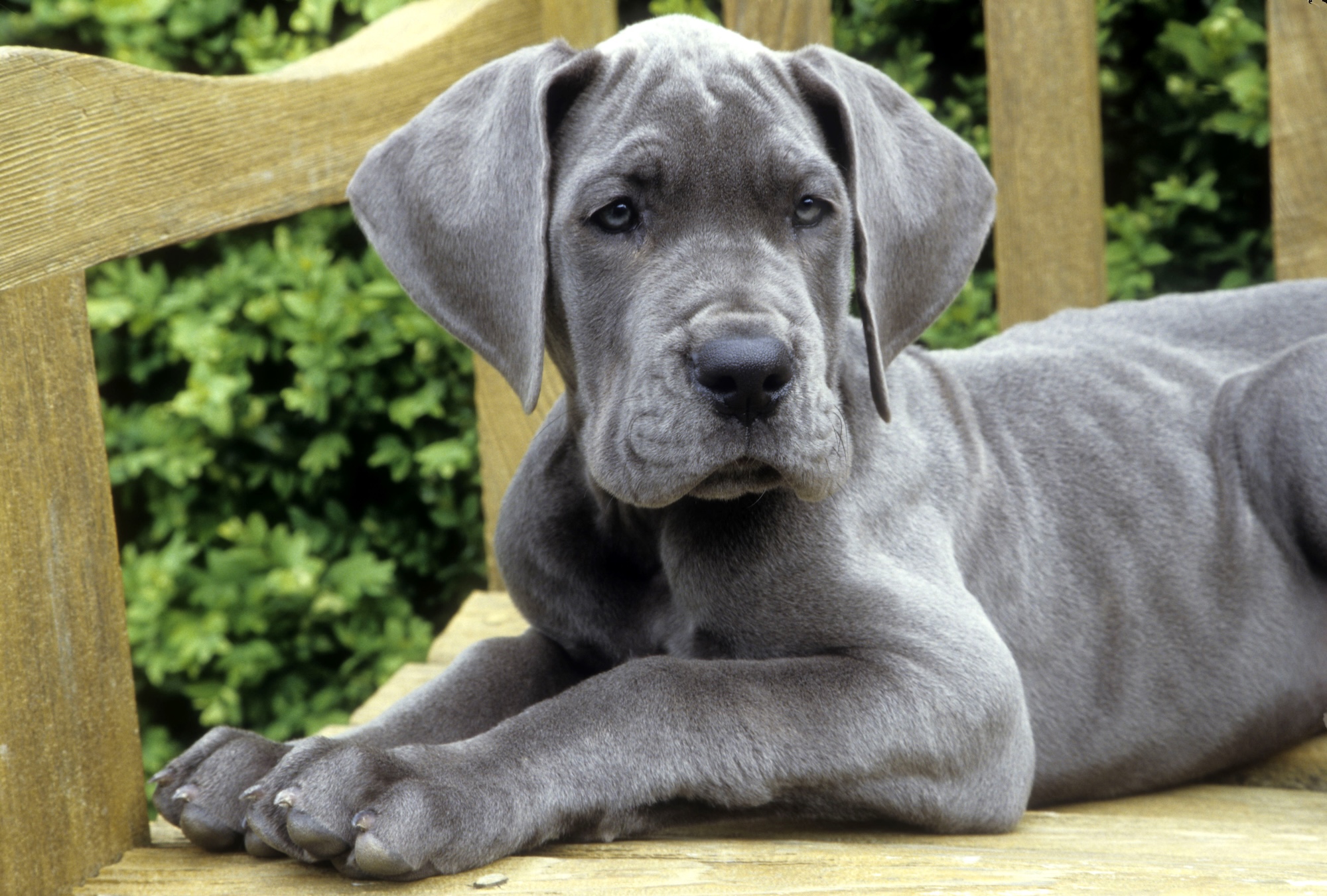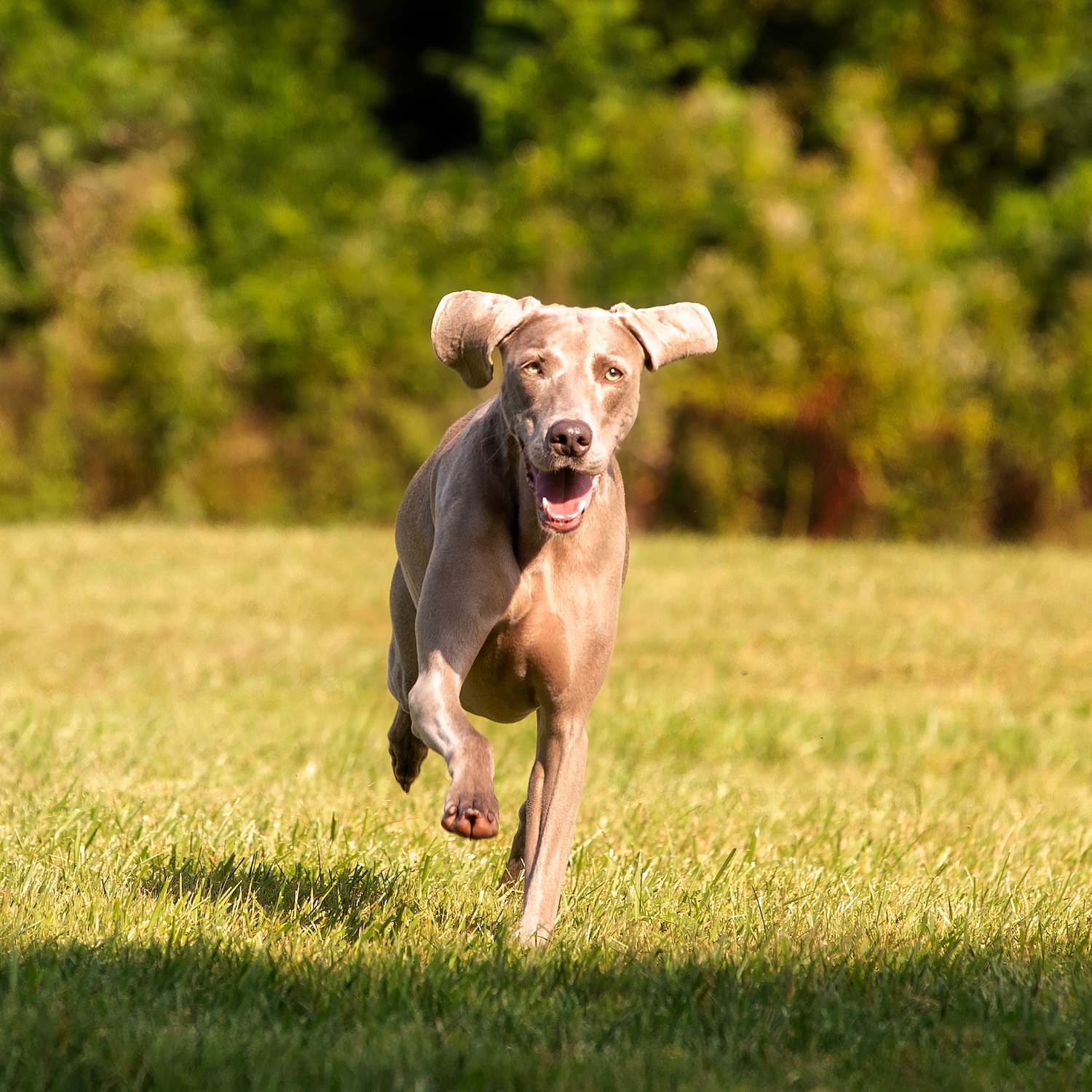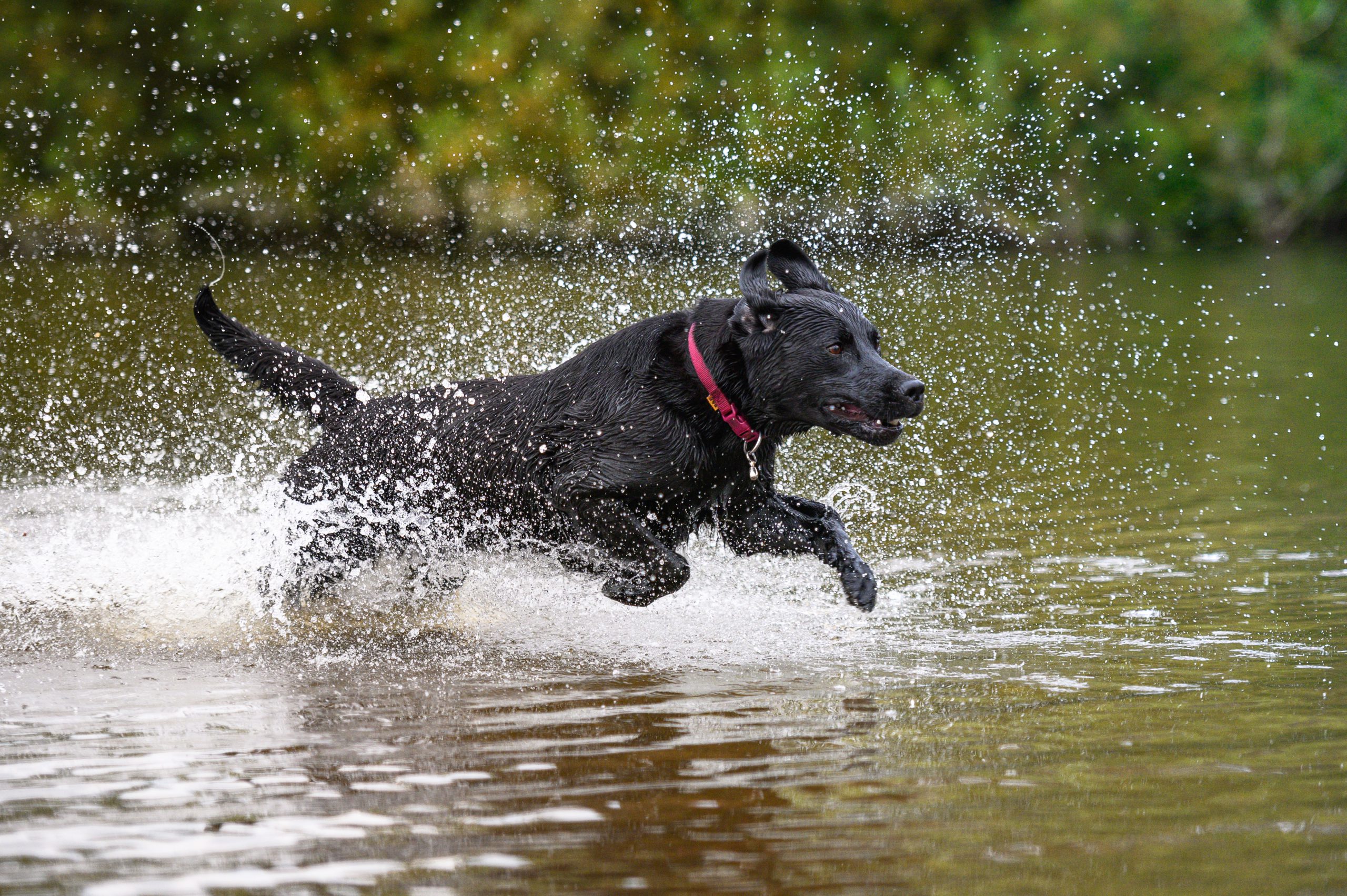Mischievous and affectionate, the dachshund—sometimes known as a “wiener dog,” “sausage dog,” or, to fans of redundancy, “hot dog dog”—inspires fierce devotion among its owners.
These long-bodied, tiny-legged companions have particular needs for optimal health and happiness. Here’s a primer for anyone considering bringing a doxie home, or looking to cultivate a better relationship with one they already have.
Basic dachshund facts
The American Kennel Club classifies the dachshund as a hound—but these dogs also share qualities with terriers, including a penchant for hunting and digging. They’re a hearty breed with a typical lifespan of 12–16 years.
They can vary quite a bit in size—a miniature dachshund is 11 pounds or less, while a standard dachshund can weigh up to 32 pounds. Which variety you bring home can have a big impact on matters like how much food you’ll buy and how easy it’ll be to bring them on trips. If you get a dachshund puppy, you won’t be 100% sure how large they’ll grow—sometimes a purported mini ends up a “tweenie,” on the larger side.
Dachshunds come in three coat types—smooth, wire-haired, and longhaired—each of which has its own grooming needs.
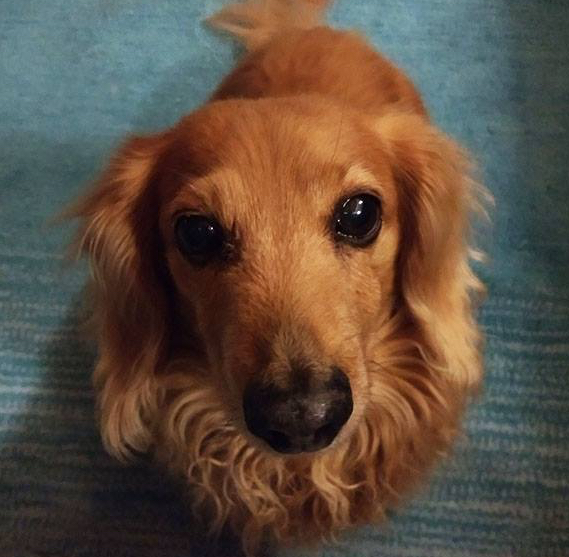
“Is a dachshund right for me?”
Like any other breed, dachshunds can be prone to certain behavioral and health issues. Here are some key points to consider before bringing one home.
Dachshunds bond strongly to their owners, show a tremendous amount of bravery relative to their diminutive stature, and are often very funny. As a result, many dachshund owners stick with the breed for decades. Arleen Guyan, who runs Paw-Affection Dachshund rescue, says she got her first dachshund around 30 years ago and still fosters them today. There were seven in her house during our phone call, with two more on the way that night. If you’re walking a dachshund and pass another dachshund owner on the street or in the park, you will probably exchange a knowing nod and smile. In fact, if you are walking a dachshund and another dachshund owner passes by without their dog, we’d give it 50/50 odds that they’ll take out their phone and show you dachshund pictures anyway.
Any dog will need your love and attention, and dachshunds—while they may be small—require plenty of human companionship and stimulation. If you bring one home, make time for bonding, walks, and play. Says Guyan, “they’re not a dog to get and then go to work for eight hours a day.” If your schedule does keep you out of your home for that long, someone should visit to walk and play with your dachshund during the day.
Take care if you have young children, for the wellbeing of the dog (whose back is delicate) and the children (because an improperly trained dachshund may snap at a youngster who approaches in the wrong way). It’s important that kids are taught not to play rough with dachshunds, who are low to the ground. A dachshund could feel the need to defend themselves against a child who makes a move that seems threatening—even inadvertently. Taking the time to train both parties on mutual respect is key to living happily with this breed.
The long history of dachshunds
“Dachshund” means “badger dog” in German, and the dogs were first bred as far back as the 16th century to hunt said burrowing mammals. Hence their lengthy bodies, short legs, and booming voices, which allow their owners to keep track of them underground. Even miniature dachshunds can be hunters, pursuing moles and rabbits. Dachshunds’ provenance may be a reason that many of them feel an urge to dig, outdoors and indoors—yours might “dig” the bed and burrow into a blanket. Dawn, who owns a dachshund-chihuahua mix named Buster, says that he “totally has the dachshund love of digging. He doesn’t dig outside, but has dug holes in his bed and a few pillows.”
We didn’t find any major American professional or college sports team named the Dachshunds, which means that some ambitious marketer has an opportunity to finally give the breed its due.
Many dachshunds have had brushes with celebrity. Notable public figures who’ve had dachshunds in their lives include Jerry Seinfeld, Andy Warhol, and Dorothy Parker. Shark Tank’s Daymond John has been known to bring his two dachshunds into the office. And Pablo Picasso lived with a dachshund named Lump for six years. While Picasso lived with many dogs, Lump was reportedly the only one he ever picked up in his arms—and he depicted Lump in many works of art.
Waldi, the mascot for the 1972 Berlin Olympics, is a dachshund, as are Buddy, the character in The Secret Lives of Pets voiced by Hannibal Buress, and Pretzel, from Curious George.
We didn’t find any major American professional or college sports team named the Dachshunds, which means that some ambitious marketer has an opportunity to finally give the breed its due. Despite the apparent lack of a team named the dachshunds, the NBA’s Baltimore/Washington team had live dachshund mascots for many years. Alex, Tiny B-B, and Tiny Too entertained fans and lifted players’ spirits in the 1970s and ‘80s at the squad’s games.
The dachshund is so associated with Germany that, during World War I, the AKC attempted rebranding them as “Badger Dogs,” while Life Magazine reported that others had tried “Liberty Pups.” The names didn’t stick.
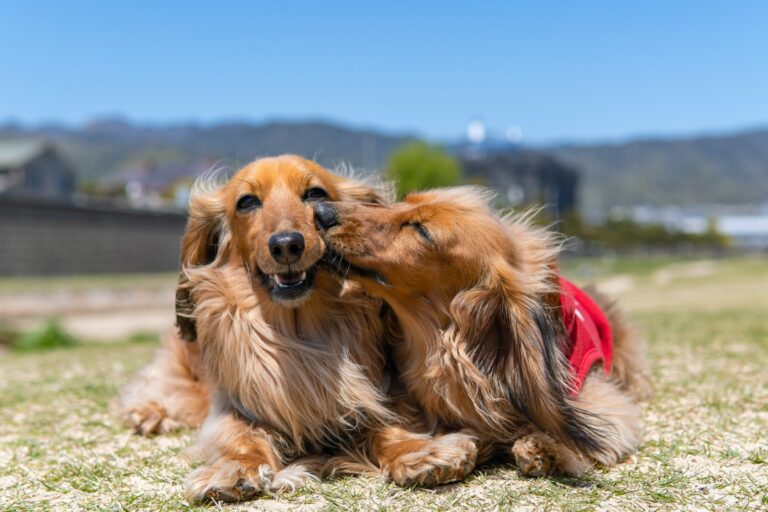
Dachshund personality
The author E.B. White said: “I like to read books on dog training. Being the owner of dachshunds, to me a book on dog discipline becomes a volume of inspired humor. Every sentence is a riot.” He’s right that dachshunds—of which he owned a succession and wrote fondly—are sometimes a challenge to train. The dogs can be vocal, and their voices tend to be loud.
They also have a reputation for stubbornness. However, Annie Grossman, owner of School For The Dogs in Manhattan and host of School For The Dogs Podcast, doesn’t think that’s the most accurate way to frame a dog who won’t immediately go along with your wishes. “I think we label dogs as having certain qualities like ‘stubbornness’ that are really just us projecting and trying to put meaning behind things we are having trouble controlling or understanding,” she says. She also encourages her clients to view each dog as an individual rather than relying too much on a breed’s reputation.
Having said that, many dachshunds do have a strong prey drive and like to focus on a goal, even if it’s not the one you have in mind. They also tend to be courageous and faithful. Their boldness, protectiveness, and powerful voices make them good guard dogs; an intruder who hears your dachshund’s forceful warning might suspect that you have a much larger canine sentry. Sylvia, who owns a 14-year-old longhaired dachshund named Mikko, says he “is a terrific watchdog”—an ability that may seem incongruous given his compact dimensions. “It’s hilarious,” she says, “because he’s so small, and has such a big personality.” There are tales of dachshunds imprudently taking on, for example, bears—and somehow scaring them away.
Even if they’re not going after badgers or moles, many dachshunds will find an outlet for their instincts. Says Vicky, the owner of a 12-year-old dachshund named Kate: “she will always be a hunter, and will chase a cat if she can get it to run.”
Dachshunds’ vociferousness goes beyond barking (and howling). They generate a wide variety of noises, including grumbles and what sounds like talking.
Dachshund training
Dachshunds have an independent streak, but—with dedication and patience—they’re trainable. According to Guyan, “the biggest thing for house training [a dachshund] is consistency and schedule, or it will never work.” (Read more about the steps to successful potty training here.)
Excessive barking is a common—and loud—problem in dachshunds. We have some general tips for managing the issue.
Your dachshund should know the rules of your home; if you feed them scraps from the table, they may remember for a very long time. But if you only feed them from their food bowl or feed treats during training, they’ll be less likely to beg (and bark) for your human food.
Miniature dachshunds, especially, can be light and may make excellent travel partners—but get them used to buses, trains, planes, and other possibly crowded and noisy spaces early so they feel comfortable and follow directions on your adventures. Bring plenty of treats to reward them for good behavior while you’re out and about.
Dachshunds can learn and remember a lot of different tricks. Choose ones that are fun for them and safe for their long backs—jumping, twisting, and standing on their hind legs aren’t good ideas.
Grossman notes that any small dog might bite in response to unwelcome handling. As such, “it can be helpful to recognize signs of stress—the kinds of signals that a dog is likely to give prior to biting. If a dog is yawning or licking her lips,” she says, “those are signs that she may not be comfortable. Certainly if she is growling, or if she freezes—sometimes they’ll freeze and move their eyes all the way to one side, displaying the crescent-moon of the whites of their eyes—you need to change the situation before teeth land in someone’s skin.” Grossman recommends taking training steps to give your dog better associations with new stimuli—giving treats in the presence of new people, for example. But if your dog is already showing signs of stress, she says, “the best thing to do is to get them out of the situation ASAP.”
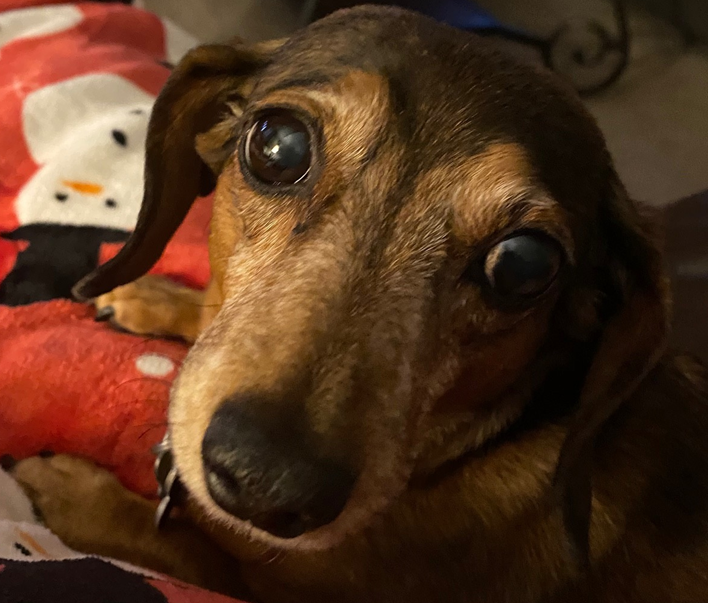
Why are dachshunds so needy?
We can’t know for sure why dachshunds need a lot of attention, but many dachshund people will confirm that they do. Says Guyan, “you would think that badger hunters could stand on their own a bit better than they do.” Dachshunds might be more susceptible than other dogs to separation anxiety, and to engage in activities like chewing non-approved items when their owners are out of the house. To prevent this, ease your dog into time alone, consider crate training, and create boundaries even when you’re at home together. Our guide to managing separation anxiety can help you mitigate the condition in a dachshund or any other dog.
A dachshund acting unusually attached may also be stressed, physically ill, or—if she’s an intact female—in heat.
Dachshunds can benefit from a predictable routine. Socialization can help. Dachshunds who aren’t used to meeting new people can be suspicious of outsiders, so consider having more than one human interact with yours each day if you can.
How to pronounce “dachshund”
There are numerous pronunciations of “dachshund” out there—for example, “dash hound,” which conjures images of a dog made out of punctuation. Here’s how to say it right:
Healthy lifestyle for dachshunds
Exercise
Dachshunds are working dogs and should stay active—at a minimum, you’ll want to take yours on a couple of walks each day for a total of at least an hour—but it’s a good idea to consider the unique needs of their distinctive bodies. To protect dachshunds’ backs (more on this later), don’t let them jump from any significant height. Prevent them from going up and down stairs, and consider getting ramps to protect them if they’re going to move between floors in a house or climb onto furniture.
One fun option for an active dachshund, per the Dachshund Club of America, is Earthdog. This activity harnesses dachshunds’ natural love of digging. Dachshunds and their owners may also enjoy field trials, which allow them to concentrate on following a scent trail (while the competition simulates hunting, no animals are harmed).
Common dachshund health problems
While dachshunds have had “World’s Oldest Dog” titleholders in their ranks, it’s a good idea to be on the lookout for health issues common to the breed. Maintaining a healthy weight and lean body condition for dachshunds is crucial because the dogs’ long spines make them susceptible to Intervertebral Disc Disease (IVDD).
Intervertebral Disc Disease (IVDD): IVDD is a degenerative disease impacting dogs’ spines, and dachshunds’ shapes make them especially vulnerable; up to 24% of dachshunds show clinical signs related to the condition in their lifetime. Extra weight puts more strain on the spine, making herniated discs more likely. Signs of IVDD include dragging or weakness of the hind limbs, refusal or reluctance to move around, a hunched back or neck, or crying out in pain. If you notice any of these symptoms, bring your dog to the vet immediately—prompt treatment can make a huge difference in their prognosis.
Severe cases of IVDD can require surgery and cause paralysis of the back legs, while more minor flareups may be treated with crate rest and/or medication. Although dachshunds have a genetic predisposition to the issue, managing their weight and forbidding big jumps and stair-climbing can help make it less likely.
Another key safety precaution is practicing proper technique when lifting and carrying them. Check out our guide to picking up a dog (and focus on the small-breed advice) for tips.
Dachshunds love to play, but be careful not to hurt them. If children will be around your dachshund, make sure that they understand to be gentle with them, never lean on them, and never drop them (and that the world looks different from that low to the ground). This is safer for the dachshund and the kids. As Guyan says, “the dog will only put up with so much.” When she seeks out adopters, she prefers households with “older, considerate children.”
Due to the potential expense of treating IVDD—surgery, if necessary, can cost $3,000 to $10,000—owners may want to consider taking out a pet health-insurance policy as early as possible. Health issues are stressful enough without worrying about whether you’ll have the money to pay for appropriate treatment.
Ear infections: Dachshunds have floppy ears that can become infected if they get dirty. You can consult our guide for some basic tips about cleaning your dog’s ears at home, and talk to your vet about how to best take care of their ears in the long term.
Dental problems: Dachshunds’ long snouts may make them especially prone to periodontal disease. Because this often impacts the roots of their teeth, a vet may need to perform X-rays to detect it. Be sure that your vet regularly examines your dog’s teeth during checkups, get professional cleanings if necessary, and institute a daily toothbrushing routine at home.
Diabetes: Another reason to keep your dachshund’s weight under control is to prevent diabetes. An overweight dog will be at a higher risk of this disease, and dachshunds may be more vulnerable than others.
Epilepsy: Dachshunds can inherit idiopathic epilepsy, or epilepsy with no apparent underlying cause. Seizures can also be caused by a variety of other conditions. They’re a serious issue, and if they arise you should seek veterinary attention.
Progressive retinal atrophy: This is a genetic disease that causes degeneration of the retina and leads to blindness. It can occur in any dog, but dachshunds may suffer a greater incidence. There is no effective treatment.
Patellar luxation: This is a condition in which a dog’s kneecap slips out of place. Symptoms to watch for include your dachshund picking up one leg and seeming to skip for a few steps, then kicking a leg out to pop the knee back into place. Severe patellar luxation can require surgery, but a vet may be able to treat a milder case with medication.
Grooming and bathing
Dachshunds’ grooming and bathing needs vary depending on their coats and behavior. A longhaired or wire-haired doxie will typically require more grooming and bathing than a smooth-haired (and, like any other dog, swimming or rolling in mud will call for more bath times). Dachshunds, especially the smooth-haired type, are low-to-moderate shedders.
Pay attention to your dachshund’s paws. They grow sharp, long claws—which are useful for digging—and you’ll want to either trim them carefully or have a groomer or vet do so each month. You might need less-frequent trimming if your dachshund regularly walks on sidewalks, which can file nails down. Keeping nails at an appropriate length helps prevent ingrown nails and allows your dachshund to walk with a proper gait, so it’s good for their health. Your floors and arms may also thank you.
Food and nutrition for dachshunds
As with any breed of dog, it’s important to feed dachshunds healthy, complete and balanced food on a regular schedule. Here are some additional considerations for feeding your long boy or girl:
Watch their weight: Dachshunds are wily, and may be able to manipulate a less-savvy owner into overfeeding, but it’s important to control their portions and calorie intake while ensuring proper nutrition. The breed’s predisposition to IVDD and diabetes makes it especially important to keep your dachshund lean. A fresh-food plan makes it easy to feed the right amount of food for their age, size, and activity level.
Dental health is good health: Eating for dental health means eating for overall health—a fresh, whole-food diet promotes a healthier immune system, which helps ward off the dental maladies common in this breed. Crunchy kibble is often said to help clean teeth, but it does no such thing. In fact, kibble is an ultra-processed food and as such can contain substances that actually fuel inflammation in the body, including in the tissues of the mouth. Most kibble is starchy, and full of fillers that break down to sugar, which contributes to plaque and bacteria.
A healthy diet—alongside exercise, training, vet care, and ample opportunity to dig burrows in your bed—is among the keys to giving your dachshund a happy, and appropriately long, life.
Where to get a dachshund
If you’re looking to adopt a dachshund or a dachshund mix, a good place to start is a rescue like Paw-Affection or Dachshund Rescue of North America.
